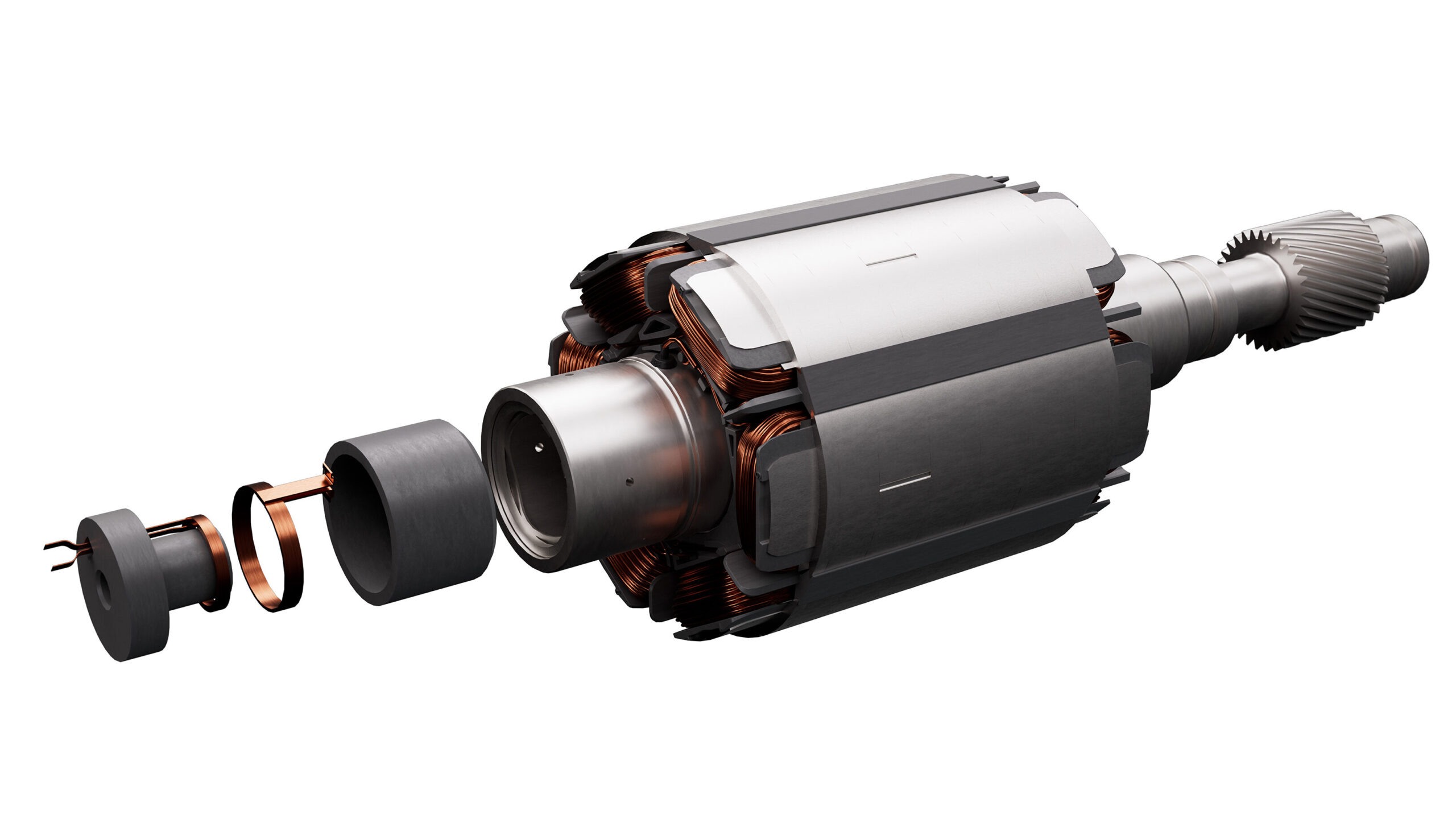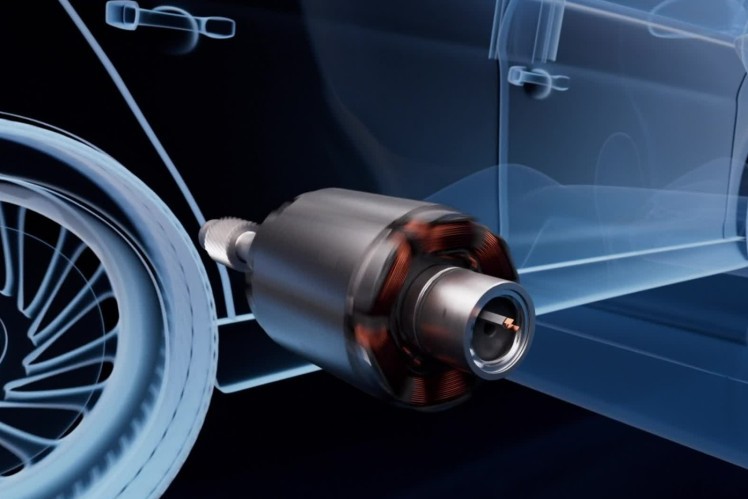ZF magnet-free motor: Smaller, less expensive, lower carbon footprint, fewer rare earth minerals
- PostedPublished 8 December 2023
German automotive supplier ZF has achieved significant advancements in electric motor technology with its magnet-free In-Rotor Inductive-Excited Synchronous Motor (I2SM) that integrates an inductive exciter within the rotor shaft, enabling the generation of a magnetic field.
This groundbreaking approach is claimed to deliver exceptional power and torque density, making it a promising alternative to the commonly used permanent magnet synchronous motors (PSMs) in electric vehicles.
By eliminating the need for minerals like dysprosium, neodymium, and terbium that are required in PSM motors, ZF’s I2SM design not only reduces production costs but also mitigates potential supply chain challenges while enhancing resource efficiency and sustainability. These minerals, known for being expensive and difficult to source, are no longer relied upon, allowing for a more streamlined and sustainable manufacturing process.
ZF has estimated that the manufacturing process emits up to 50 per cent less CO2 compared to conventional motors, primarily due to the elimination of mining, refining, and transportation associated with these chemicals. By choosing the I2SM motor, ZF says auto-makers can both reduce carbon emissions and improve the stability and reliability of supply chains.
ZF Group CEO Holger Klein expressed confidence in the I2SM technology, describing it as “another innovation with which we are consistently improving our electric drive portfolio to create even more sustainable, efficient, and resource-saving mobility”.
Integration of an inductive current transmission unit within the rotor of the I2SM motor enables energy transfer without mechanical contact and simplifies the motor design, contributing to its compact size.
This design also does not need brush elements or slip rings, maximising power and torque density while cutting size, weight, and drag losses typically associated with PSM motors.

As a result, ZF says the I2SM motors reduces energy transmission losses by 15 per cent, enhancing efficiency during high-speed journeys.
In addition, the integration of the exciter into the rotor of the I2SM motor saves up to 90 millimetres of axial installation space compared to conventional separately excited synchronous motors (SESM).
This space-saving feature gives manufacturers more flexibility in incorporating the I2SM into their EV models without needing extra installation space, simplifying the production process by allowing auto-makers to choose between PSM and SESM motor variants without making significant adjustments.
While the I2SM motor is not currently on the market, ZF has ambitious plans to develop the technology and integrate it into its e-drive platform.
This advancement will provide customers in the passenger car and commercial vehicle segments with a choice between 400-volt and 800-volt architectures.
Power electronics of the I2SM motor will incorporate silicon carbide chips, further enhancing its performance and efficiency.
Dr Klein claimed the company was well ahead of the curve on I2SM technology.
“We currently see no competitor that masters this technology as well as ZF,” he said.
- CategoriesIn SightGlass
- Tagselectric vehicles, EV, SightGlass News Issue 31


